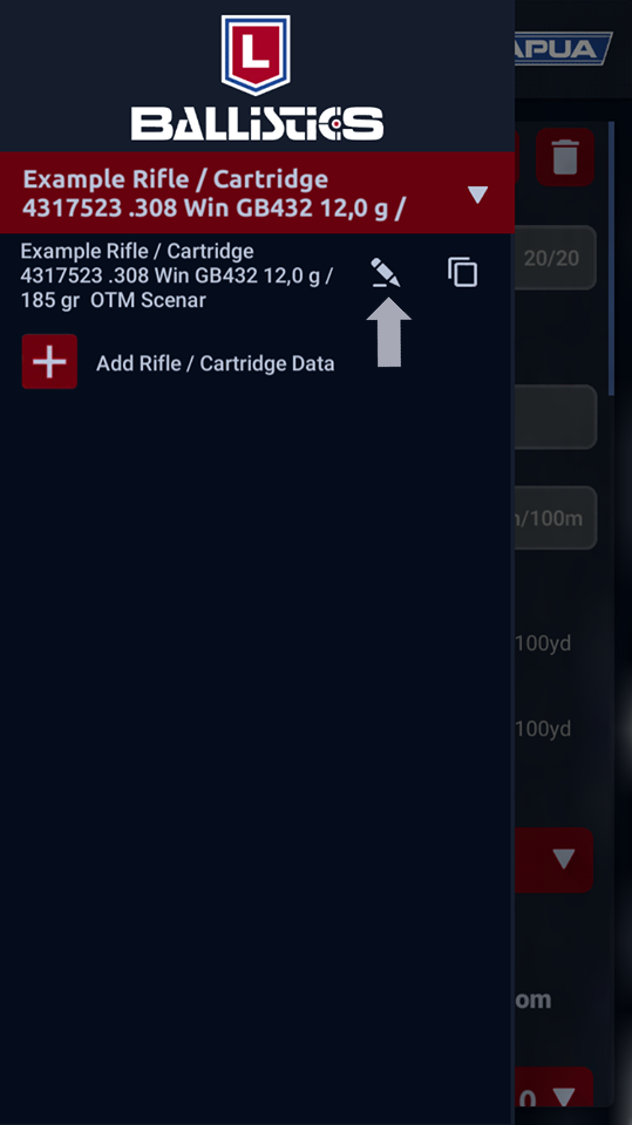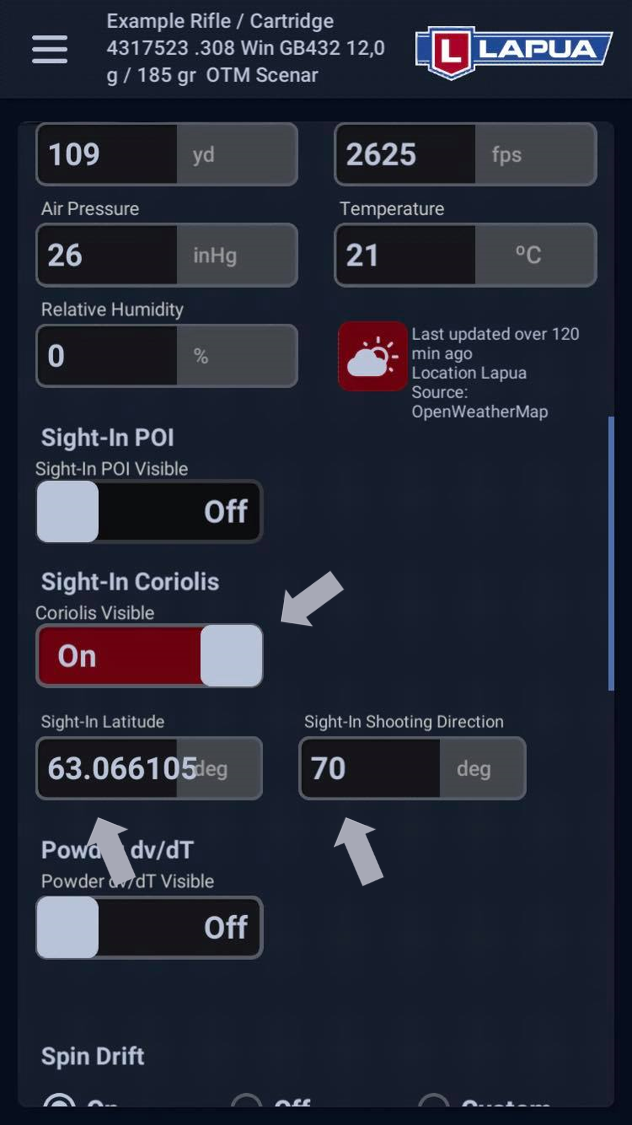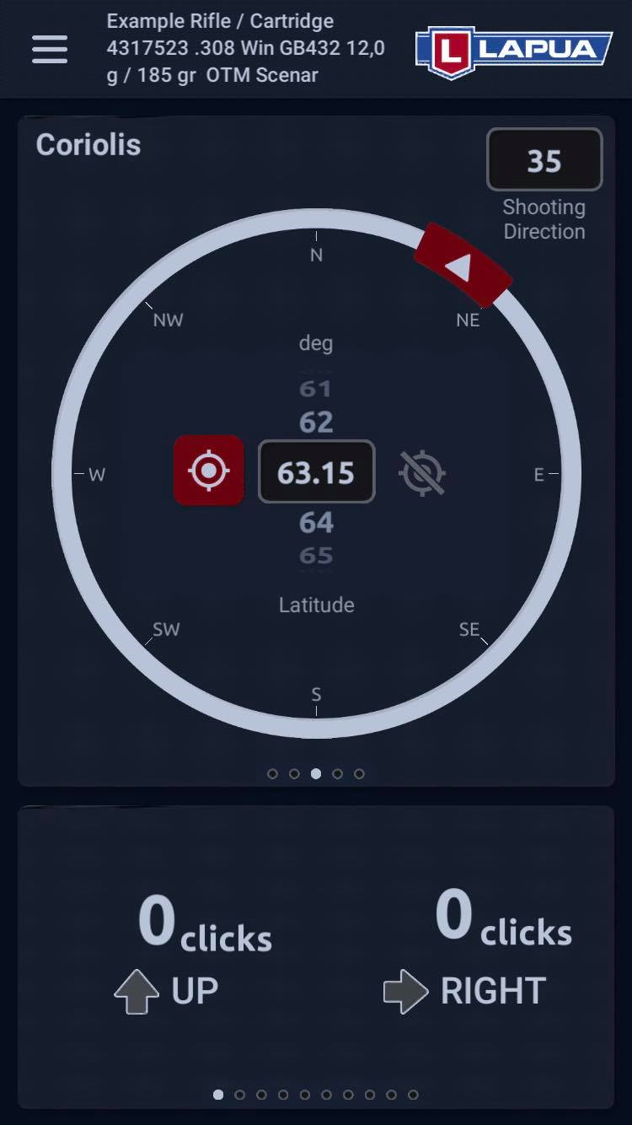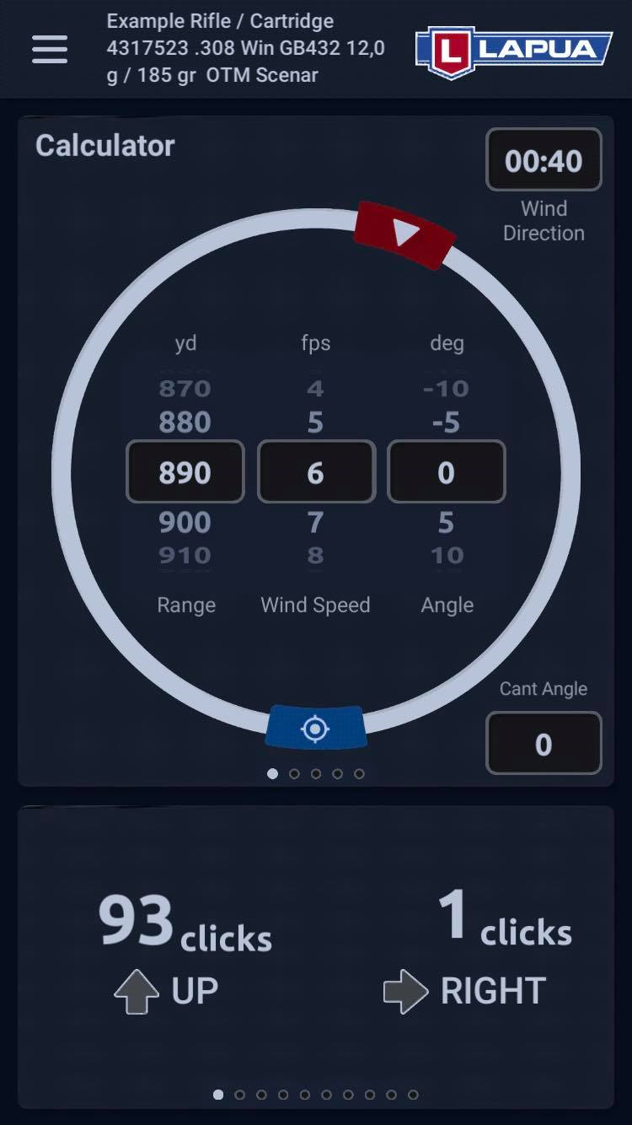This is brand new series of updates on our website: Lapua Ballistics app tips! Get the most out of our free of charge ballistics calculator by following our tips which we will be sharing all through year 2020. If you haven’t tried our app yet, download it and check out our guide for easy setup!
Previously published tips in the series:
Utilizing Point Blank Range and V0 or Muzzle velocity calculation
The Sight-In POI feature
Next tips featuring: Benefits of 6 DOF calculation and Trajectory calculation for bullets and cartridges
TIP: The Coriolis effect – what is Coriolis, and how does it affect shooting?
The Coriolis Effect describes the pattern of deflection taken by objects not firmly connected to the ground as they travel long distances around the Earth. The Coriolis Effect is caused by the fact that different parts of the Earth rotate at different speeds, i.e. the rotational speed is higher at the Equator compared to the poles.
In shooting, the Coriolis Effect means in practice that the deviation of the trajectory of the bullet, i.e. the curvature, arises from the difference in rotational speed between the shooter and the target. Put simply, due to the rotational motion of the Earth, the target location moves at a different speed than the firing point during the flight of the bullet. This speed difference is affected by the location and direction of the firing point on the Earth, the firing distance, and the flight time of the bullet. The Earth rotates counterclockwise (as seen from the north), that is, from west to east.
When shooting in the northern direction near the North Pole, the circumferential speed of the target is lower than the circumferential speed of the shooter standing south of the target, whereby the distance from the shooter to the axis of rotation of the Earth is greater than the distance of the target to the axis of rotation. Thus during the bullet’s flight, the target has turned less to the right compared to the shooter, and the bullet misses the target flying past it to the right. When shooting in the southern direction near the North Pole, the circumferential speed of the target is higher than the circumferential speed of the shooter. In this situation during the projectile’s flight, the target has turned more to the left than the shooter and the bullet again misses the target to the right.
At what shooting distances does Coriolis have an effect?
The effect of the Coriolis phenomenon can already be seen on medium firing distances, but it becomes an essential variable for the hit with shooting distances of 1,000 m/yds and beyond.
The Coriolis phenomenon affects the flight of a bullet in the Northern Hemisphere so that when firing north or south, the bullet sways to the right and in the Southern Hemisphere to the left. The more your firing line is in the east-west direction, the less the effect of the Coriolis.
The magnitude of the deviation depends on the location latitude and the flight time of the bullet. The maximum deviation is at the poles and the smallest at the Equator, because the difference in rotational speed between the shooter and the target is at maximum at the poles and zero when firing symmetrically over the Equator.
The Eötvös Effect
When shooting a bullet to the east or west, the Eötvös Effect also affects the flight. When a bullet is fired in the direction of rotation of the earth, i.e. to the east, the shots hit high. If the bullet is shot west, the shots hit low. The reason behind it is that when you’re firing east, in the direction of the Earth’s rotation, the target has time to move during the flight time below what the aiming point was, so the hit is at the top. When shooting west against the direction of the Earth’s rotation, the target has time to move higher than the aiming point during the flight, so the bullet hits low. The more your firing line is in the north-south direction, the less the effect of the Eötvos phenomenon.
Often the Eötvös Effect is considered to be part of the Coriolis phenomenon, but it is in fact its own separate phenomenon. The Eötvös Effect is at its strongest at the Equator and at zero at the poles. The deviation caused by Coriolis and Eötvös effects are around +/- 10 cm / 3.9’’ at a distance of 1,000 m/yds.
Using Coriolis calculation in Lapua Ballistics
- From the menu in the upper left corner of the screen, select “Manage Rifle / Cartridge Data” and from the drop-down menu, select the rifle / cartridge for which you want to enable Coriolis calculation. Scroll down to the Sight-In settings and set “Sight-In Coriolis” to On.
- In the Sight-In Latitude window, set the latitude at which you have done the sighting-in, and in the window next to it, set the direction in which you’ve fired when sighting-in.You can easily check the latitude with Lapua Ballistics when you are at your shooting location, or from Google Maps by clicking on the location where you have done the sighting-in. Enter the value in the style of xx.xx. From the same Google Maps view, you can also estimate the cardinal direction in degrees of your sight-in. North is 0˚, East is 90˚, South is 180˚ and West is 270˚. Naturally, you will get the exact value for the sight-in direction with a compass when you are at your firing point.Next, tap Save.


| Coriolis in Calculator view
Now that the basic settings are in order, you can use the app’s Coriolis calculation by swiping to the third upper window of the Calculator view.
However, also keep in mind that Spin drift also affects lateral movement at long distances and should also definitely be considered when shooting long distances. Spin drift is its own phenomenon independent of the Coriolis, which Lapua Ballistics takes into account in the calculation when you have it set to ‘On’ in the basic settings menu. |




